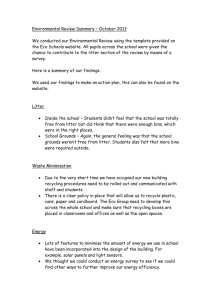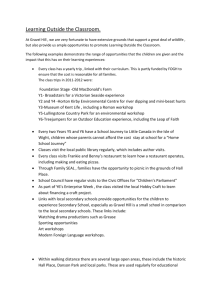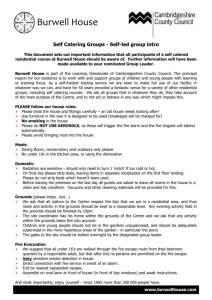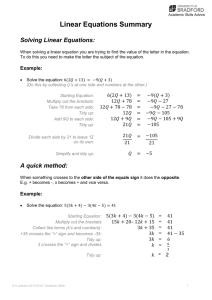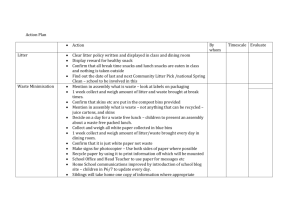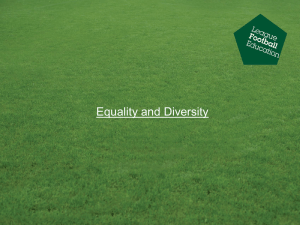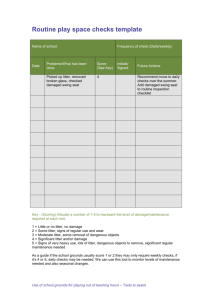External Areas - Health & Social Care Information Centre
advertisement
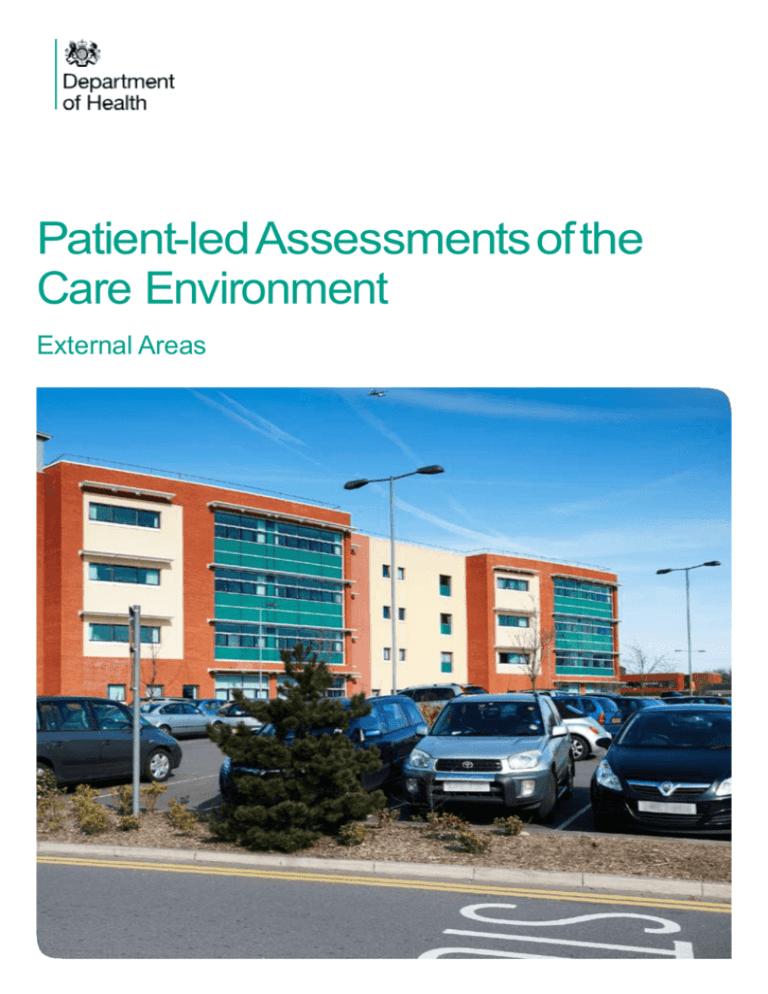
Patient-led Assessments of the Care Environment External Areas You may re-use the text of this document (not including logos) free of charge in any format or medium, under the terms of the Open Government Licence. To view this licence, visit www.nationalarchives.gov.uk/ doc/open-government-licence/ © Crown copyright Published to gov.uk, in PDF format only. www.gov.uk/dh Building – maintenance and appearance • The building(s) should look clean and well maintained. External brickwork or other building material should be free of staining and damage • Gutters, pipes etc should be free of obstructions, e.g. vegetation • Pipes and wires should be securely and safely fixed • Windows and window frames etc should be clean and free from damage and, where appropriate, painted frames should be in good condition. Notes optional (reasons for failure must be recorded) Grounds – maintenance • The external area around the building should be well maintained to help provide a safe environment • Roads and walkways should be well maintained, free of potholes and uneven surfaces/loose paving slabs • Road markings should be clear • There should be clearly identified pedestrian crossings in appropriate places (e.g. close to main entrances) • Where appropriate, kerbs should have been adapted to facilitate wheelchair access. Notes optional (reasons for failure must be recorded) Grounds – appearance and tidiness • The external area around the building should be tidy and well maintained. It should be free of litter, graffiti, cigarette stubs and chewing gum (NB – assessors should exercise judgement about the quantity/how recently gum may have been discarded). Small amounts of apparently recent gum can be discounted, but build-up should not be allowed to happen. • Areas of grass should be kept tidy, and areas planted with e.g. bushes/shrubs should be well maintained and weed-free • Trees or other overhanging objects should trimmed/pruned so as not to provide a hazard to e.g. partially sighted people or in darkness • Pathways should be free of moss, algae and bird droppings • All obstacles, e.g. flower tubs, should be safely located so as not to present a tripping or other hazard • Particular attention should be paid to areas where smoking is known to happen and where additional cleaning/tidying will be necessary • Clinical waste containers should not be visible. Notes optional (reasons for failure must be recorded) The assessment – External Areas 3 Grounds – safety • The journey from the parking area(s) is clearly marked, well lit and safe (e.g. does not cross the path of traffic or, where it does cross the path of traffic, there are clearly identified and well lit crossing points). Notes optional (reasons for failure must be recorded) Other notes SOCIAL SPACES Areas for action/record reasons and details of why a No has been recorded 4 Is there a a safe, enclosed and secure outside space e.g. garden, courtyard or terrace for patients? Notes: If No, subsequent questions in this section should be ignored. To answer Yes the area(s) must be specifically defined for this purpose, not simply part of the general site grounds. Y/N Has seating been provided in the outside area? Y/N Is/Are these areas well maintained, tidy and litter free? Y/N Is/are the surface(s) level, with no raised edges or other tripping hazards? Y/N Is/are the areas wheelchair accessible Y/N Is/are the area(s) aesthetically pleasing (e.g. landscaped, planted) to encourage their use? Y/N Where there is/are (a) pathway(s) within the external social space(s), does it/do they follow a continuous route to return the user to the beginning? N/A where there is no pathway. Y/N The assessment – External Areas SIGNS (OUTSIDE THE BUILDING) Yes = Y No = N Not applicable =N/A Areas for action/record reasons and details of why a No has been recorded Do the signs help you find your way around the building grounds, and do they clearly identify all important/regularly used parts of the organisation, e.g. main entrances, major departments such as emergency departments and outpatient areas? Are signs visible (e.g. not obscured by overgrown trees or other obstructions) and clean? Note: In certain settings e.g. learning disabilities, respite homes or addiction units, the organisations policy may be to not signal the buildings purpose. Where this is the case this aspect need not be assessed and answered N/A. The assessment – External Areas 5 © Crown copyright 2015 2904466 Produced by Williams Lea for the Department of Health
